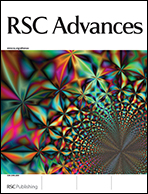A facile route to synthesize transition metal oxide/reduced graphene oxide composites and their lithium storage performance†
Abstract
Transition metal oxide (Mn3O4, Fe2O3, Co3O4, and ZnO) and reduced graphene oxide (RGO) composites were successfully synthesized via a hydrothermal method using the direct reaction between the corresponding metal powder and graphene oxide (GO). In this process, the GO can be reduced by transition metal powder in water, and the nanosized metal oxide can be obtained, and homogeneously mixed with and wrapped by RGO to form a metal oxide/RGO composite at the same time. X-ray diffraction, Raman spectroscopy, X-ray photoelectron spectroscopy, and scanning and transmission electron microscopy were used to characterize the as-prepared materials. The different experimental parameters, including reactants, solvents, atmosphere inside the autoclave, temperature, and reaction time, were investigated for their effects on the phase of the products. Furthermore, as an example, the lithium storage properties of Fe2O3/RGO and Co3O4/RGO composites were also investigated. The electrochemical performance shows both good cycling stability (∼852 mA h g−1 up to 200 cycles) and high rate capability (425 mA h g−1 at the 4 C rate). This can be attributed to the novel RGO-wrapped composite structure, which can buffer the volume changes and maintain good electrical conductivity.


 Please wait while we load your content...
Please wait while we load your content...